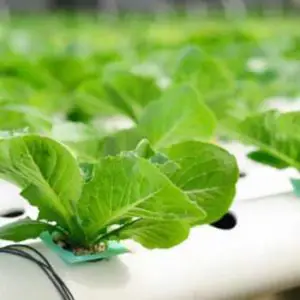Contents
Because we are so used to finding plants in fields and gardens, anything else seems completely out of the ordinary. However, this is a fact. In addition to growing without healthy soil, plants can often do much better with their roots submerged in fresh water or exceptionally moist air. Hydroponics is the process of growing plants without soil. Hydroponically grown foods — including tomatoes on the vine — may sound odd, but many of the foods we consume are grown in a hydroponic garden. Learn more about hydroponics!
What is hydroponics?
Photosynthesis is when plants convert carbon dioxide (a gas in the air) and water into glucose (sugar) and oxygen by using natural light and chlorophyll inside their leaves.
It doesn’t mention “soil” anywhere in there — you don’t need any more proof than that. As part of a traditional garden, soil anchors the plant and provides water and nutrients. The roots of plants could live with the absence of soil if they could get “plant food” somewhere else – for instance, by soaking their roots in nutrient-rich water. Hydroponics is based on that principle. In theory, hydroponics refers to growing plants in water. Still, because plants can grow in water without standing in it, most people interpret the term as meaning growing plants without soil.
Why opt for hydroponic farming?
 Growing without soil has some advantages, even though hydroponics often gets questioned for its benefits. Those who switch from conventional to hydroponic methods can get much higher yields. Hydroponically grown edible plants get nutrients much easier than plants in soil because they dip their roots directly into nutrient-rich solutions. Therefore, they need smaller root systems and can focus their energy on leaf and stem growth. Growing more plants in the same area with smaller root growth means getting a higher crop yield (particularly useful in limited space indoors, like greenhouses and balconies). Plants grown in hydroponic systems grow faster, too. Since soil carries many diseases, growing without it generally results in a more hygienic growing system. An indoor hydroponic method is perfect for growing leafy greens year-round since it can be used all year. A computerized system with timers and computerized controls makes this process easier.
Growing without soil has some advantages, even though hydroponics often gets questioned for its benefits. Those who switch from conventional to hydroponic methods can get much higher yields. Hydroponically grown edible plants get nutrients much easier than plants in soil because they dip their roots directly into nutrient-rich solutions. Therefore, they need smaller root systems and can focus their energy on leaf and stem growth. Growing more plants in the same area with smaller root growth means getting a higher crop yield (particularly useful in limited space indoors, like greenhouses and balconies). Plants grown in hydroponic systems grow faster, too. Since soil carries many diseases, growing without it generally results in a more hygienic growing system. An indoor hydroponic method is perfect for growing leafy greens year-round since it can be used all year. A computerized system with timers and computerized controls makes this process easier.
There are not only good things about it; there are also some downsides. The first is the cost of all the equipment that you need, such as a hydroponic container, an air pump, grow lights, water reservoir, nutrients, and so forth. In addition, there is the “ponic” part of hydroponics systems: you have to spend some time toiling. It is sometimes possible to be quite cavalier when it comes to conventional growing and, as long as conditions are favorable, your plants will still thrive. Hydroponic farms are more scientific, however, and you are much more in control of various type of plants. For them to thrive, you have to monitor them constantly. In addition, hydroponic plants have much extensive root systems and so often cannot support themselves. Quite elaborate support systems may be needed for heavy fruiting plants.
How does hydroponic growing work?
Hydroponic growers have various systems to choose from. Using a hydroponic nutrient solution and a water pump, you can drip water solution past the roots of your plants in a trough. Flooding, gravity, or capillary action is used to deliver the nutrient-rich solution to the roots.
Nutrient film technique systems, which are commonly used in vertical farms, function as its name suggests. The nutrients are a liquid conveyor belt that delivers appropriate nutrient levels to the plant roots as they slither past them constantly. The roots of plants can also be supported by nutrient-rich media like peat moss, Rockwool, sand, or vermiculite on a grow tray, which can replace the soil with sterility.
Either an active system or passive hydroponics approach fortifies water with nutrient solution and stores it in a nutrient reservoir. The excess water or excess solution is recirculated back to the centralized reservoir. Small-scale home gardens are most commonly hydroponically grown with drip systems that can support larger plants.
Another method of growing plants is aeroponic systems, as typified by a popular product called the AeroGarden. Plants are grown in a container full of extremely moist air, not air, despite the name suggesting they are growing in the air. In effect, the roots are protected by an aerosol rich in nutrients, similar to a mineral-filled cloud.
Almost any plant can be grown by hydroponic gardening, but-as with all gardening-there are always plants that do better than others. Among the plants that thrive are tomatoes, strawberries, lettuce, leafy vegetables, and herbs.

